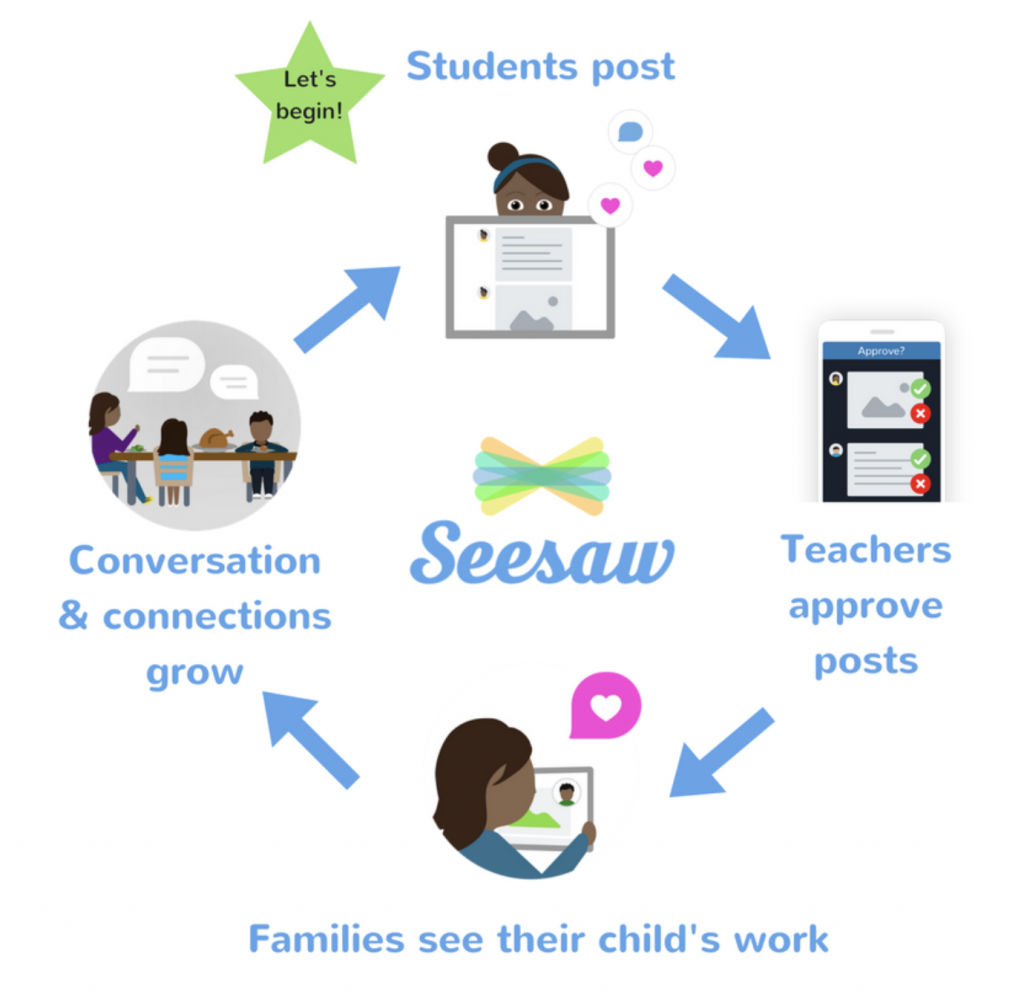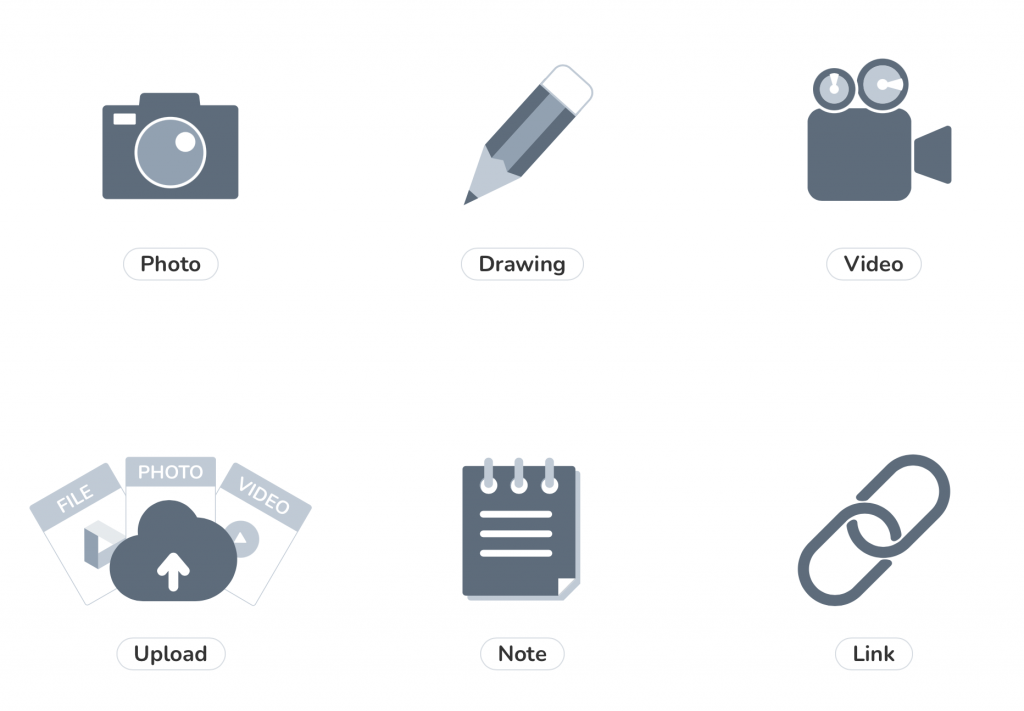Seesaw Through My Learning
Seesaw can work to aid in showing each student’s work, growth and learning process. This tool reminds me of a blog site; the educator or student can post pictures, drawings, videos, notes, links, announcements, and chat with each guardian or student through their account, and comment on posts. If the student is posting, the post will need to be approved by the teacher through their personal account first. Seesaw is beneficial to guardians because they can view their child’s progress and thinking wherever and when they would like.


This platform allows students to showcase what they feel comfortable with and proud of, resulting in the promotion of student engagement and a strive to partake in their learning processes. Seesaw sparks as an inclusive tool used for any device for students who can not make in-person classes and guardians who can not attend in-person meetings about their child’s progress. Seesaw inspires students as it is similar to social media but in a more restricted and thoughtful way.
Some ways you can use Seesaw in a classroom are…
- Portfolio
- easy for guardians/ family to access if unable to be present for an in-person meeting
- Learning projects
- blogs, progress reports, pictures, videos, demonstrations, write up, etc
- Remote learning
- pandemic, sickness, away from home, vacation
- Peer discussions
- classroom or global (offers diversity and various perspectives)
- Class blogs
- differentiated learning opportunities & processes
- Provide ongoing feedback to students
After posting an image, a video, a link, or a lesson, students will be able to like or comment on the post – similar to Instagram, Facebook and Twitter. Allowing students to comment on peers’ posts enables students to engage more deeply, expand higher-level critical thinking skills, and promote further learning opportunities. Students can choose a blog that interests them, promoting further engagement. Engaging in peers’ blogs increases opportunities to build a relationship of similar age and interests due to feeling more comfortable and open with choices – this is a great way to promote learning opportunities without feeling like schoolwork!
Providing students with the opportunity to guide their learning through a learning project of choice aids in assisting with student engagement. Students often formulate questions and make predictions and observations while experiencing the trial and error to further their learning process. I completed an assignment in ECS303 about project-based learning and the need to be implemented in more classrooms. My PowerPoint compares projects vs exams followed by various academic sources.
Here are written instructions for all & more information: Seesaw | PDST

